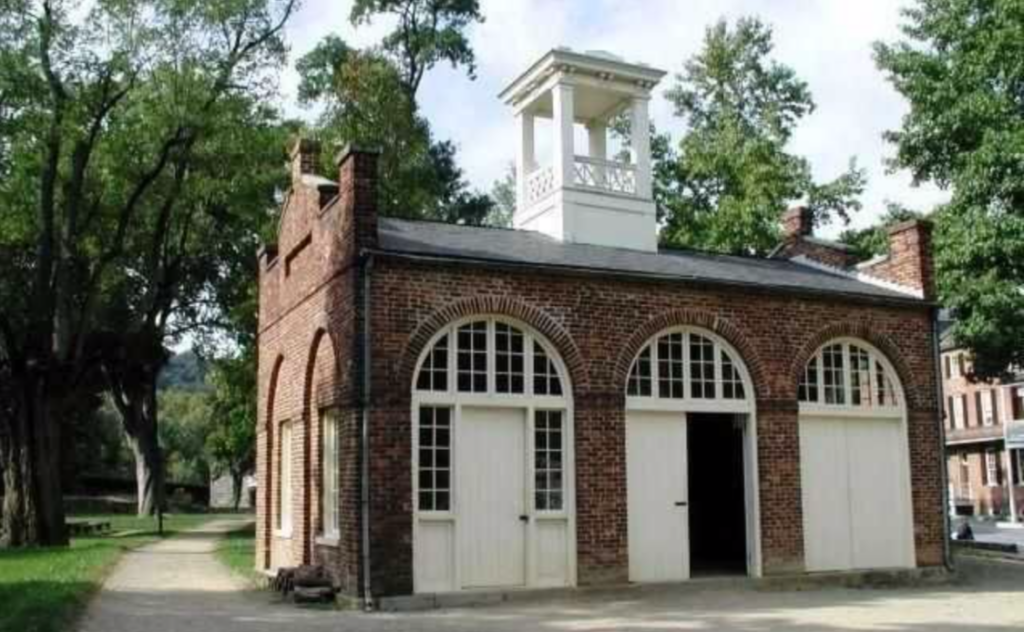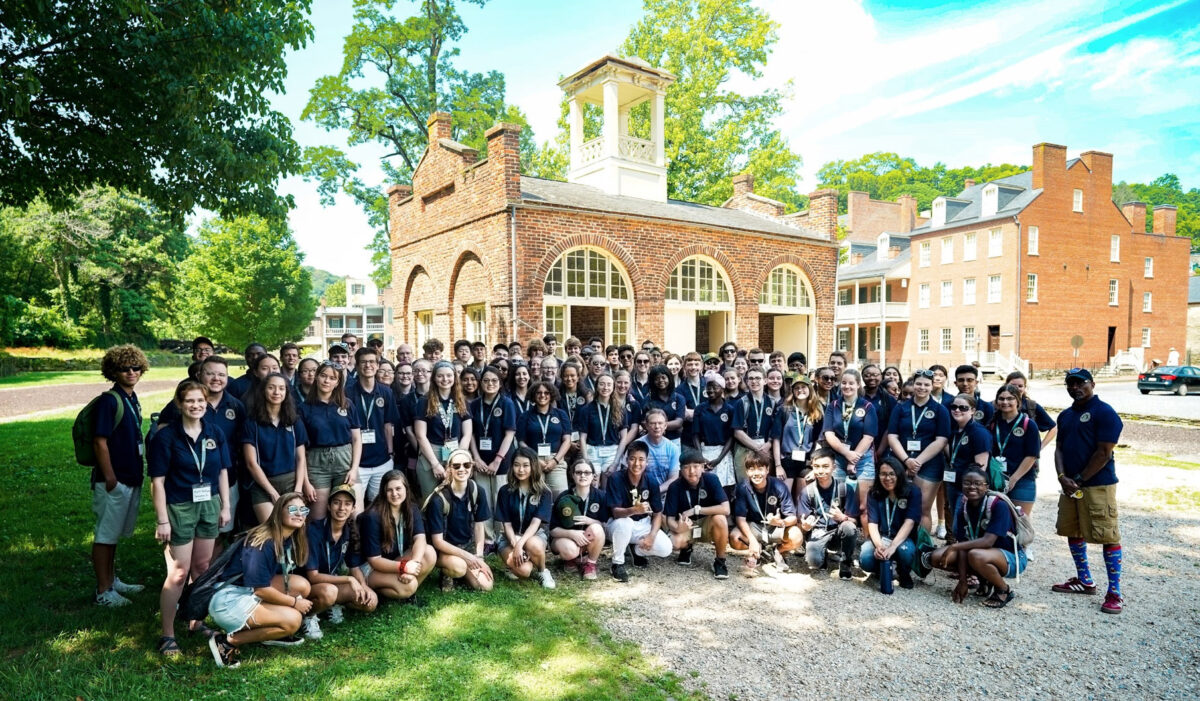A woman in an extravagantly tailored dress walks beside a man in a Civil War uniform. Single story brick structures with arching windows line thin roads. But amidst this picturesque 19th-century town is a glaring anachronism: the honk of a BMW.
Harpers Ferry celebrated their 75th anniversary as part of the National Park Service last weekend on June 30, 2019. This park in West Virginia has views of Maryland and Virginia, a Civil War Museum, and John Brown’s Fort, which was a key site in a Pre-Civil War abolitionist raid. Dennis Frye, a park ranger who retired after working at Harpers Ferry for 32 years, returned to the site over the weekend to join the celebration and lead park tours.
“For the 75th anniversary, [Harpers Ferry] held commemorative lectures about the creation of the park, music festivals, art contests, and more,” Mr. Frye said.
In 1859, as tensions over slavery were reaching a critical point, John Brown took over a United States arsenal in Harpers Ferry in an attempt to create an armed slave revolt. Brown’s raid failed, but it incited polarizing reactions throughout the country. Today, Dennis Frye believes American society can still learn from the actions of Brown and his followers.
“John Brown’s Fort is a building that many people think of as an equivalent to the Liberty Bell,” Mr. Frye said. “It’s a place where people fought and died to bring freedom. It’s a place where the war to end slavery was launched. But it’s also a place of different meanings – many people think of it as a place where the law was violated. So that building really embodies various different perspectives.”

When Mr. Frye leads tours around the fort, he gives visitors a choice: will they follow Brown or will they stay behind? This single question illustrates why John Brown has captivated Americans for centuries: he’s a conundrum.
“John Brown is someone you can’t say is this or that. People form their own opinions on him based on what they are taught, what their morals are, and where they grew up. This great diversity of opinion on Brown makes him one of the strongest characters in American history,” Mr. Frye said.
There’s no better place to teach Brown’s story than Harpers Ferry, the very spot his failed raid occurred. This West Virginian park is just one of the over 400 national park sites in the United States dedicated to preserving sites of natural and cultural importance. And yet, the stories of John Brown and other historical figures face a serious and looming threat: underfunding.
“National Parks have been underfunded by virtually every administration since Lyndon Baines Johnson left the White House in 1969,” Mr. Frye said. “We’re now coming up on five decades of the administration and the Congress not appropriating enough funds for National Parks to operate and to be safe. As a result, we now have a $12 billion backlog in required maintenance in National Parks. Roads are falling apart, bathrooms are no longer open, water and sewer pipes are leaking and rupturing, and public places are unsafe to visit. We have a real crisis in National Parks today due to fifty years of underfunding by both Republican and Democratic administrations.”
If nothing changes, parks like Harpers Ferry will fall, taking the hard-earned lessons of history along with them. The Liberty Bell of West Virginia, coated with human freedom and civil rights, may ring no more.
“John Brown represents the best of American debate. The great thing about him is that there is no final answer to who he is, what he is, or what he represented,” Mr. Frye said. “History is at its greatest strengths when people don’t agree.”
